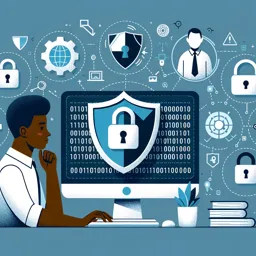Understanding Digital Forensics Tools
Digital forensics is a specialized field within cyber security that involves investigating and analyzing digital devices to uncover evidence of cybercrimes, security breaches, or policy violations. Modern digital investigations rely on a suite of advanced tools and software to collect, preserve, and analyze digital data while maintaining its integrity. In this article, we will explore the essential digital forensics tools that professionals use during investigations and explain how each contributes to the forensic process.
Categories of Digital Forensics Tools
Digital forensics tools are designed for specific tasks, and most investigations require a combination of several tool types to gain a comprehensive view of an incident. The primary categories include:
- Disk and Data Imaging Tools: These tools create exact copies of storage devices, ensuring original evidence is not modified. Disk imaging is a critical first step in any investigation.
- File Analysis and Recovery Tools: Used to recover deleted files and examine file metadata, helping investigators uncover hidden or obscured evidence.
- Network Forensics Tools: Focus on capturing and analyzing network traffic, allowing experts to trace unauthorized access, data exfiltration, or suspicious communications.
- Memory Forensics Tools: Capture and analyze data from a device’s RAM, often revealing recent activity or the presence of volatile malware.
- Mobile Forensics Tools: Extract and analyze data from smartphones and tablets, which can be critical given the vast amount of information people store on mobile devices.
Popular Digital Forensics Tools
Some software applications have become industry standards in digital forensics. Here are a few widely used examples:
- EnCase: A comprehensive suite for disk imaging, evidence collection, and in-depth analysis of file systems.
- FTK (Forensic Toolkit): Known for its speed and ability to index large volumes of data, FTK is effective for file recovery and e-discovery.
- Wireshark: An open-source network protocol analyzer, essential for examining packets and identifying security incidents stemming from network activity.
- Autopsy/The Sleuth Kit: A user-friendly platform for disk analysis that supports a wide range of file systems and evidence formats.
- Volatility: A memory analysis framework, invaluable for investigating malware and uncovering in-memory artifacts.
- Cellebrite UFED: One of the leading solutions for extracting and analyzing mobile device data in law enforcement investigations.
Best Practices When Using Forensic Tools
Proper use of digital forensic tools is vital to ensure the integrity and admissibility of evidence:
- Chain of Custody: Maintain a detailed record of all actions taken on evidence, from collection to analysis.
- Data Integrity: Use write blockers and hashing tools to verify that the original data remains unaltered during analysis.
- Documentation: Thoroughly document all investigative steps, tool settings, and findings for transparency and legal compliance.
- Continuous Training: Stay updated with the latest forensic tools and techniques, as cyber threats and evidence sources continue to evolve.
Conclusion
Digital forensics tools are the backbone of modern cyber investigations. By combining the right tools with sound investigative procedures, digital forensic specialists can uncover and preserve crucial evidence, helping to solve cybercrimes and improve cybersecurity posture. Whether it’s for criminal investigations, corporate incidents, or compliance purposes, mastering these tools is essential for anyone aspiring to specialize in digital forensics.





























